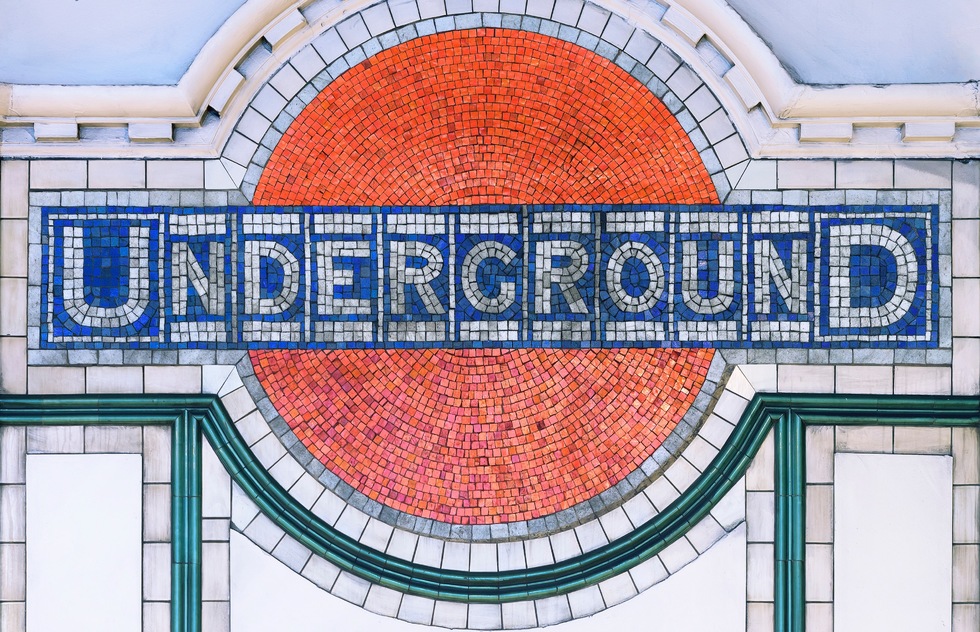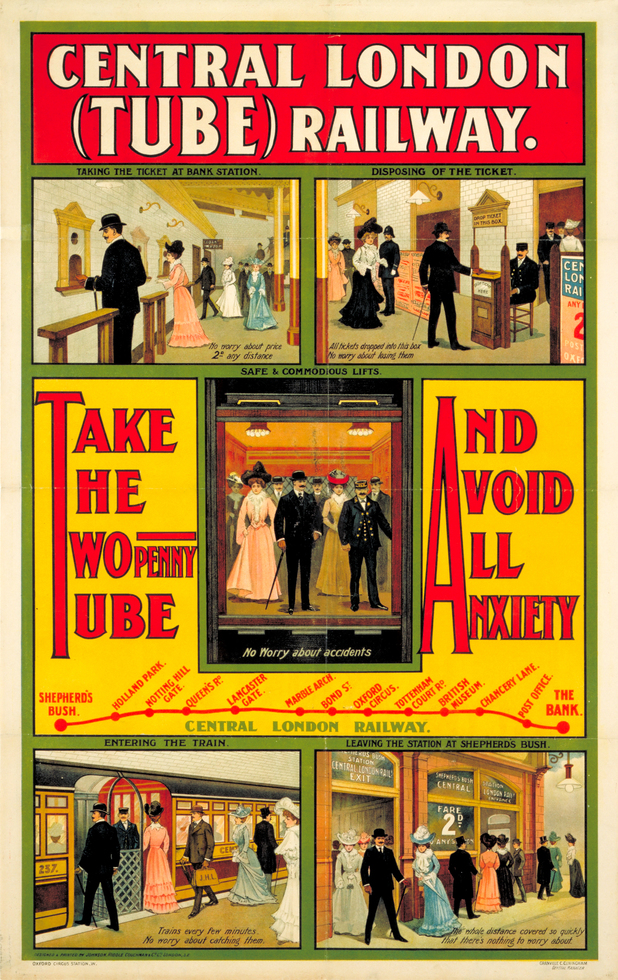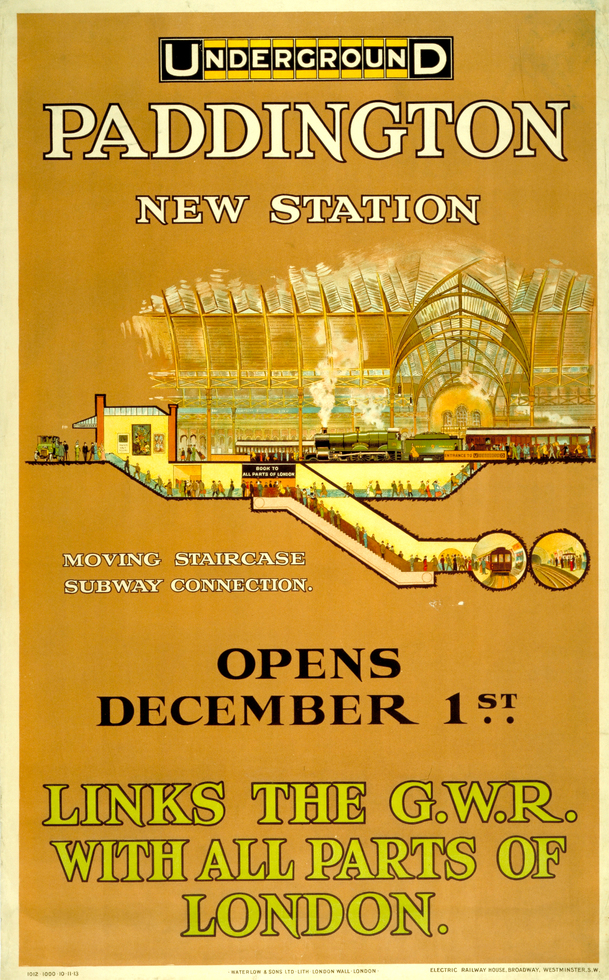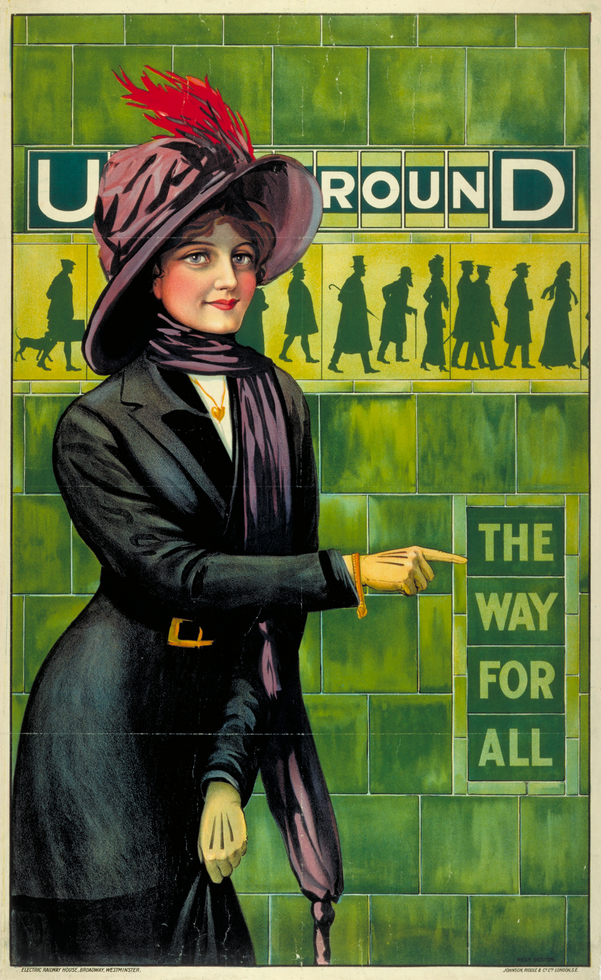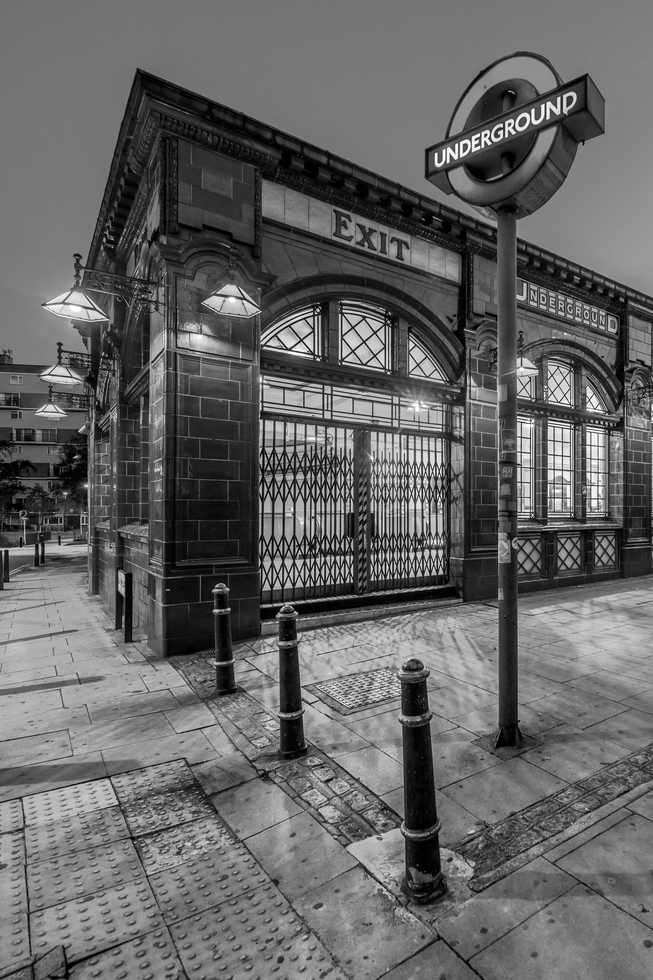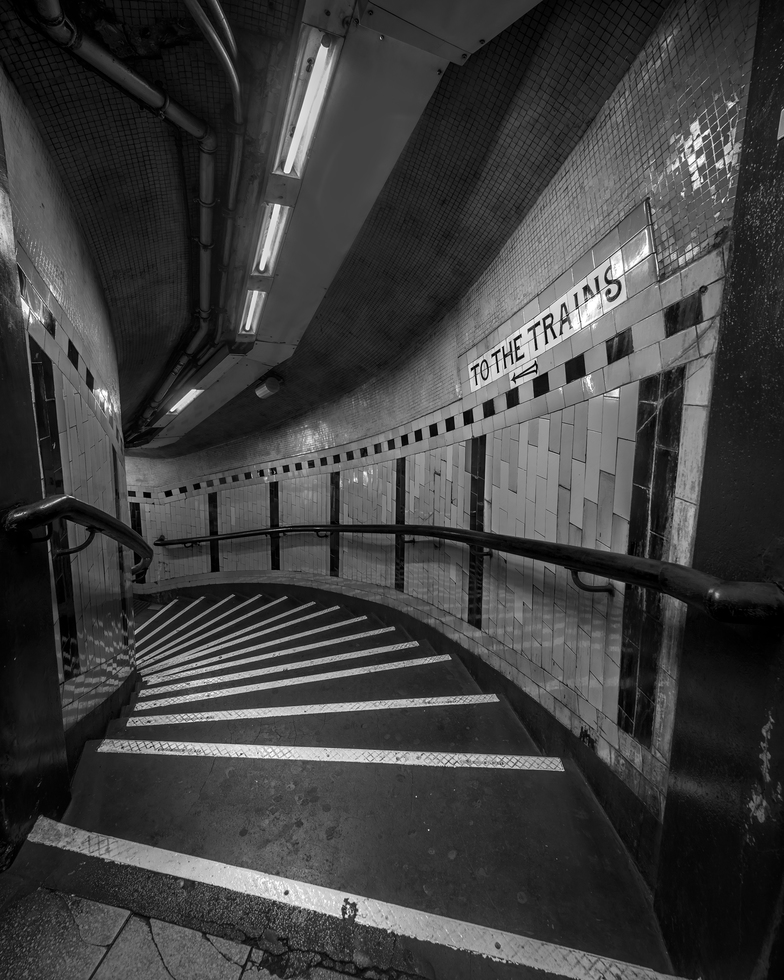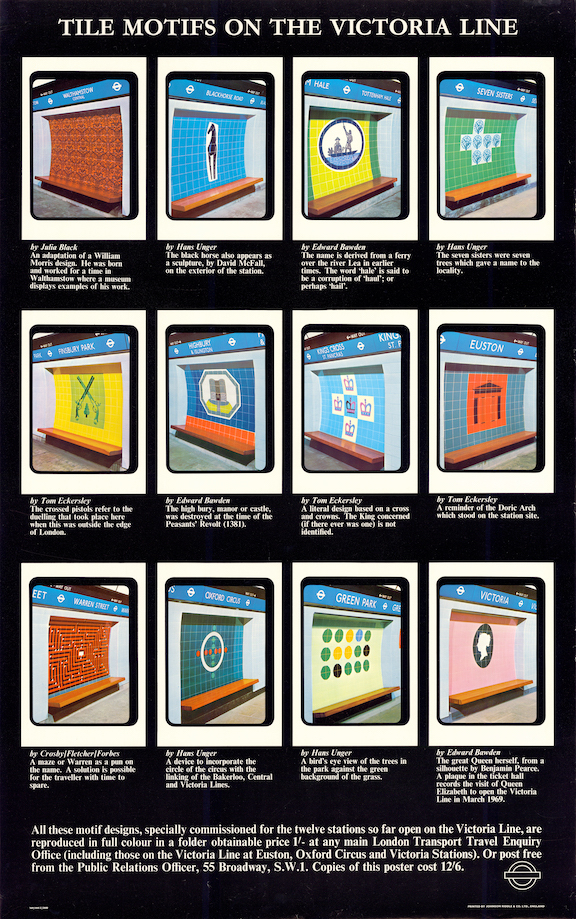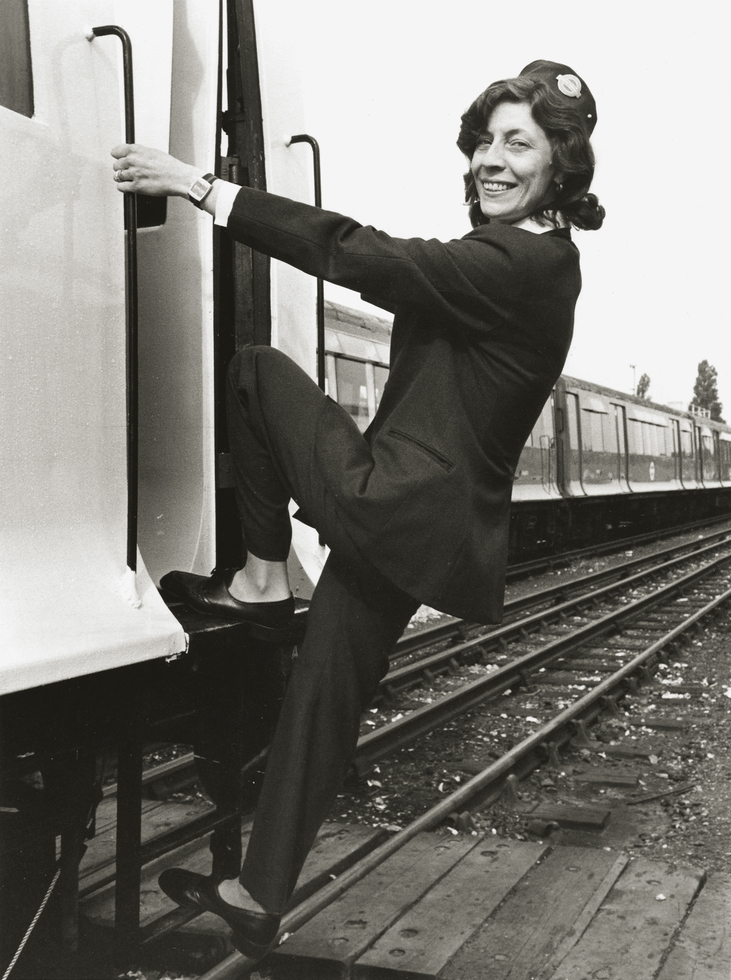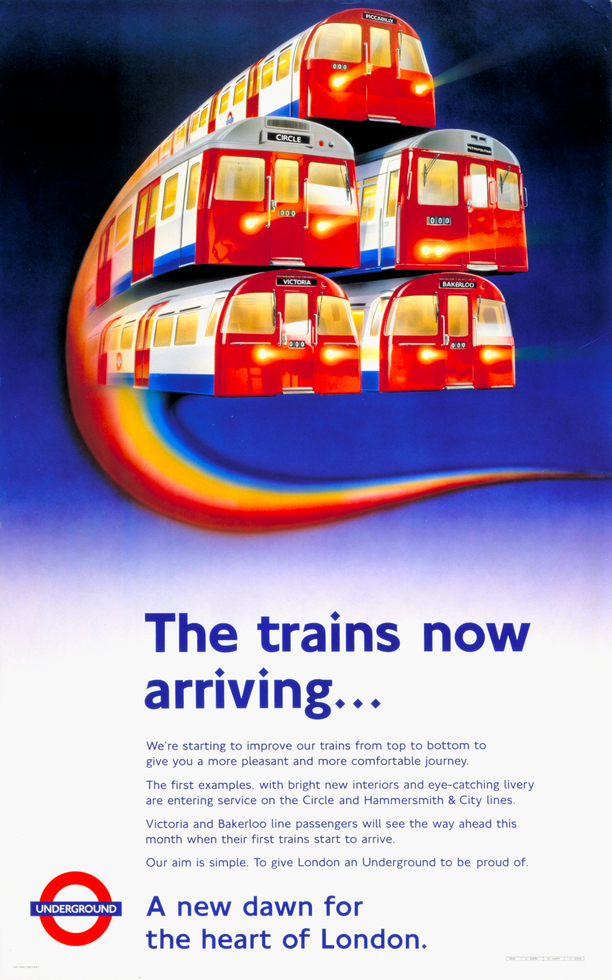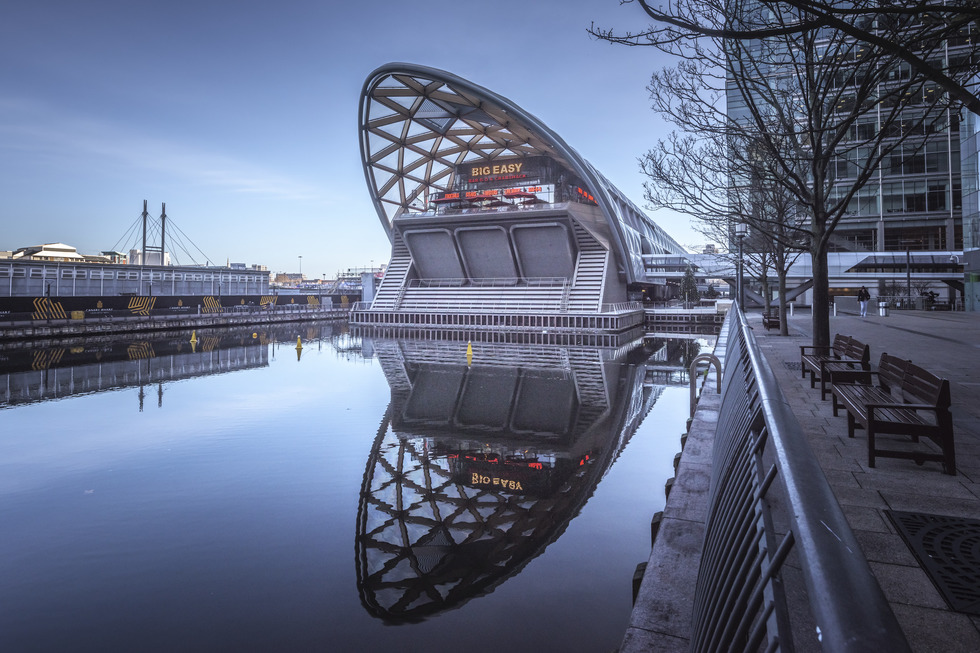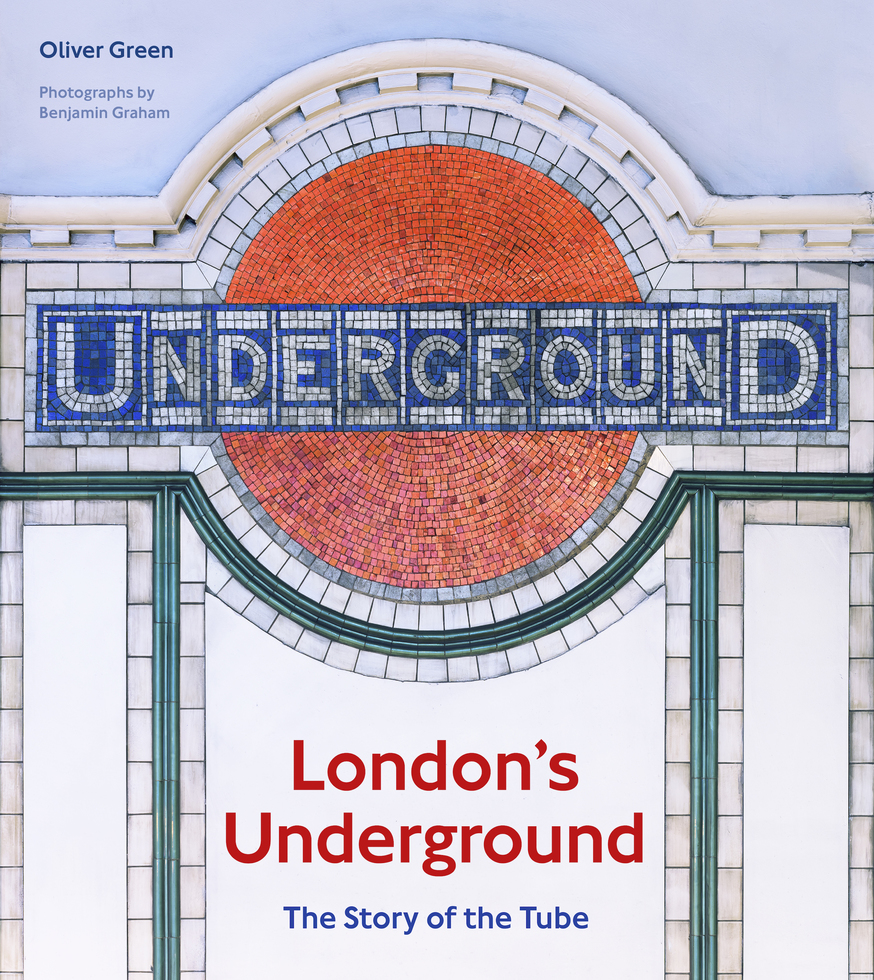The Story of London's Underground Retold in Images
By Frommer's StaffIn London, the city’s major transit system is an attraction unto itself. Opened in 1863, when carriages were still hauled by steam engines, London’s Tube has been at the vanguard of design and transportation ever since. A new 272-page book, London’s Underground: The Story of the Tube has been published in association with Transport for London, which runs London’s subway system. In an exclusive gallery of photos from his book, author and Tube historian Oliver Green traces the history and influential designs of the Underground through new and archival images.
The Tube's Inception
The Circle line platforms at Baker Street looked like this when they opened in the 1860s. They were restored in the 1980s to an approximation of their original appearance.
"Take the Twopenny Tube and Avoid All Anxiety"
A 1905 poster for the Central London Railway offering a reassuring illustration of how to use the “Twopenny Tube,” named for its affordable fare. There was a heavy investment in staff: booking clerks, ticket collectors, elevator operators, and train gatemen, all required to make passengers feel safe and secure on a new deep-level system that was unfamiliar to people at the time.
The Implementation of Escalators
Underground poster announcing the Bakerloo extension to Paddington, an expansion that opened in 1913. This was one of the first new Tube stations that had escalators ("moving staircases") instead of lifts.
The People's Tube
"The Way for All" by Alfred France, 1911. From the beginning, Tube posters always stressed that the Underground was a system for everyone, no matter the rider's class or gender. In this case, the publicity targeted women using the striking purple-and-green palette of the Suffragettes.
An Iconic Station Design
Kilburn Park station on the Bakerloo extension, opened in 1915, was designed by staff architect Stanley Heaps. Richly colored tilework became a signature feature of the Tube and enabled passengers to identify stops from a distance. In many places in London, that vintage tilework still exists.
A Winding Exit
The emergency spiral stairs at Covent Garden station, with their original 1906 tiling, wrap around the lift shafts. They are still in use, although the stop is now considered too small for the high ridership numbers of modern use.
The Victoria Line: Modernized Design
By 1969, when the first twelve stops of the Victoria Line opened, the Tube's traditional elaborate tile motifs had been simplified to splashes of color distinctive to each station.
Women in the Underground
Hannah Dadds, the first woman driver on the Underground, climbs into her cab at Upminster depot on the District line in 1978. London Underground started a campaign to recruit women drivers, but even now, less than 10% of train operators on the Tube are female.
A More Comfortable Ride
"The Trains Now Arriving...": announcing a major refurbishment program in the 1990s. A new corporate livery was applied on the outside and interiors were given a complete redesign in a program that began in 1994. This eventually covered all existing trains on the Circle, Hammersmith & City, Victoria, and Bakerloo lines. (The book, London’s Underground: The Story of the Tube, is full of rarely seen posters like this from the Underground's deep archive.)
A Constant Process
The upcoming Elizabeth line section of the Canary Wharf train complex, located in the reclaimed Docklands area of East London. Named for Queen Elizabeth II, the Elizabeth line will be the first phase of the long-awaited Crossrail tunnel, which travels east-west deep under the city.
There's more in the book
For more rare photos and posters from the Tube's century and a half of history, London's Underground: The Story of the Tube is out now.





